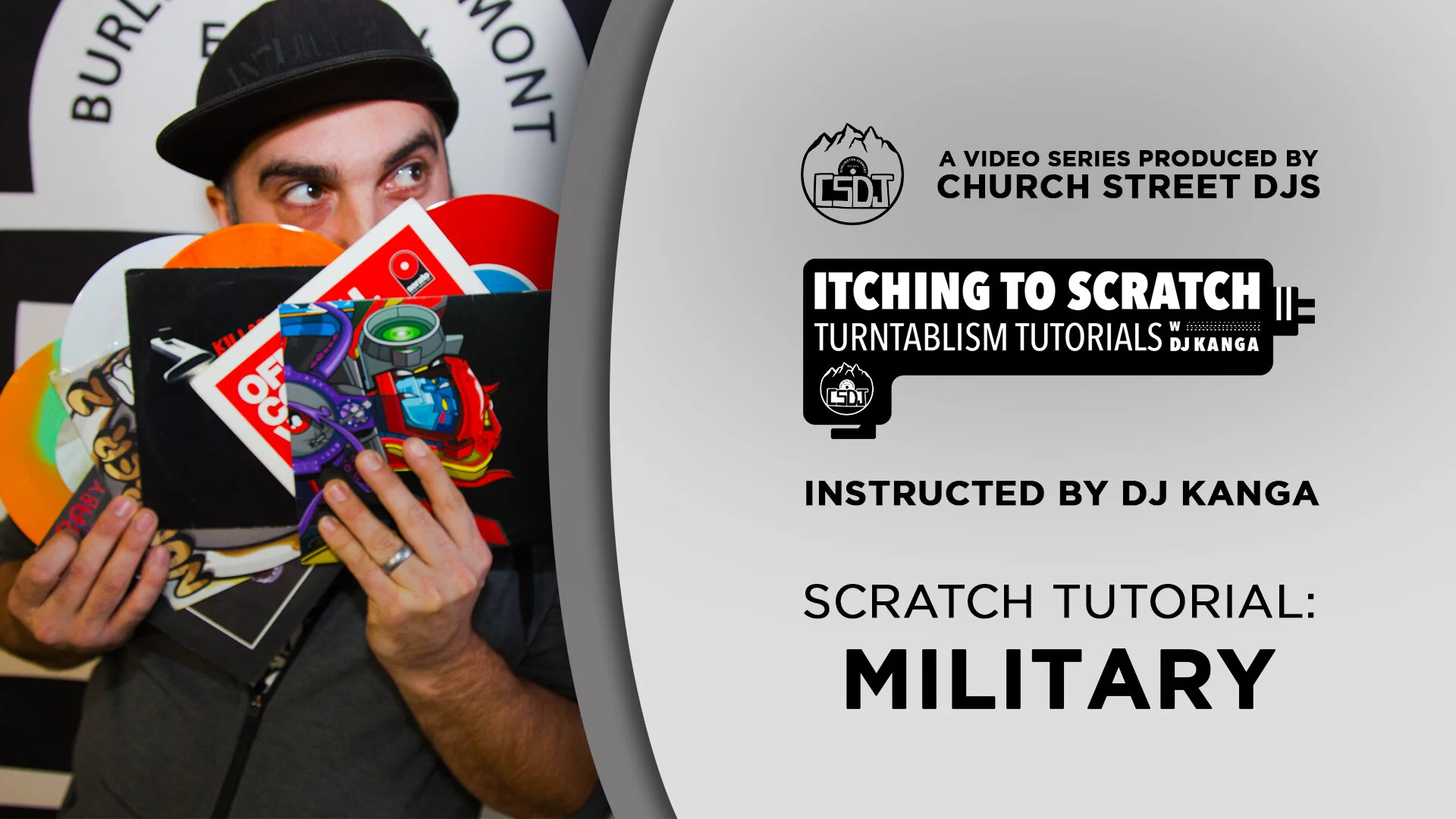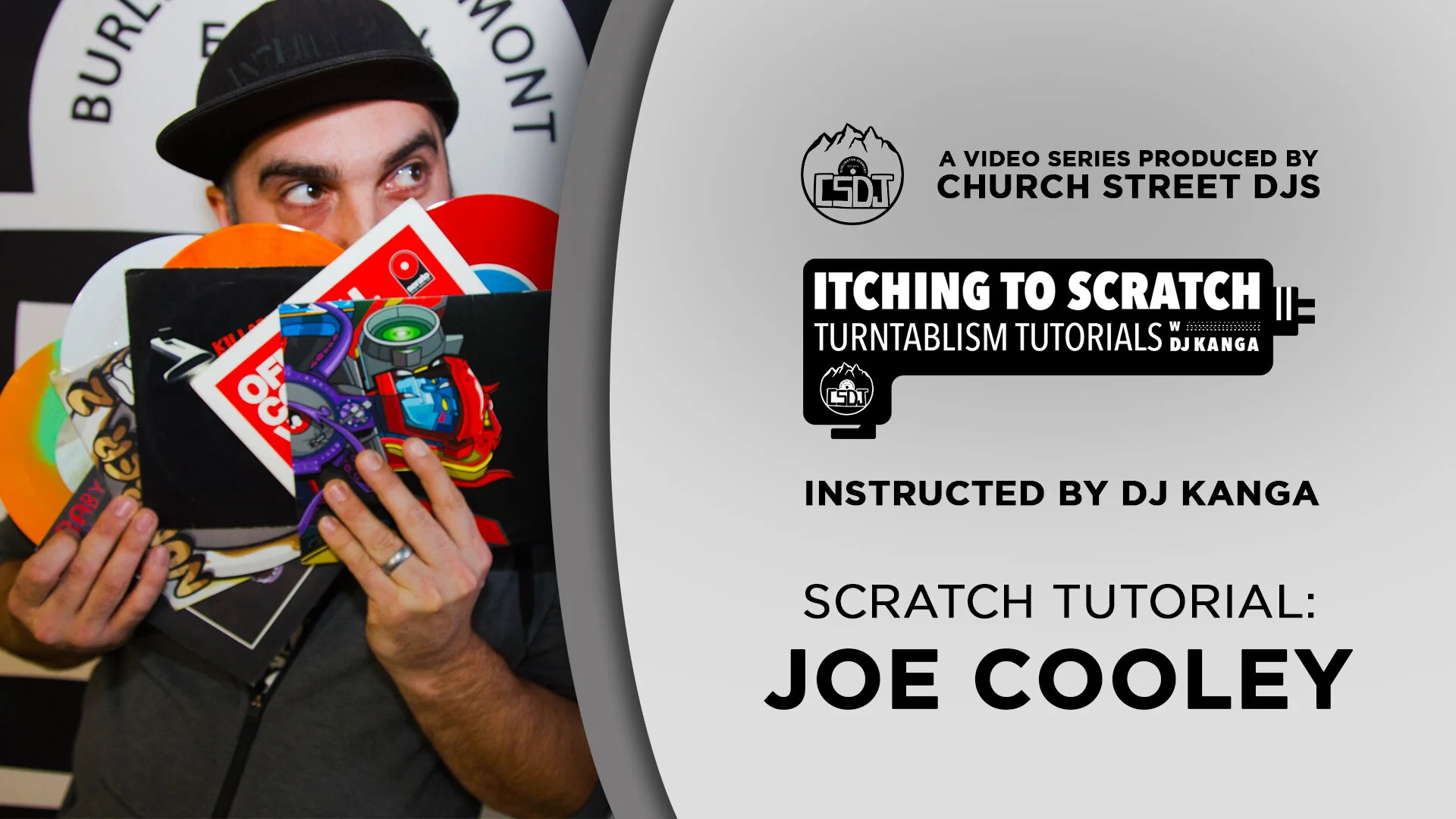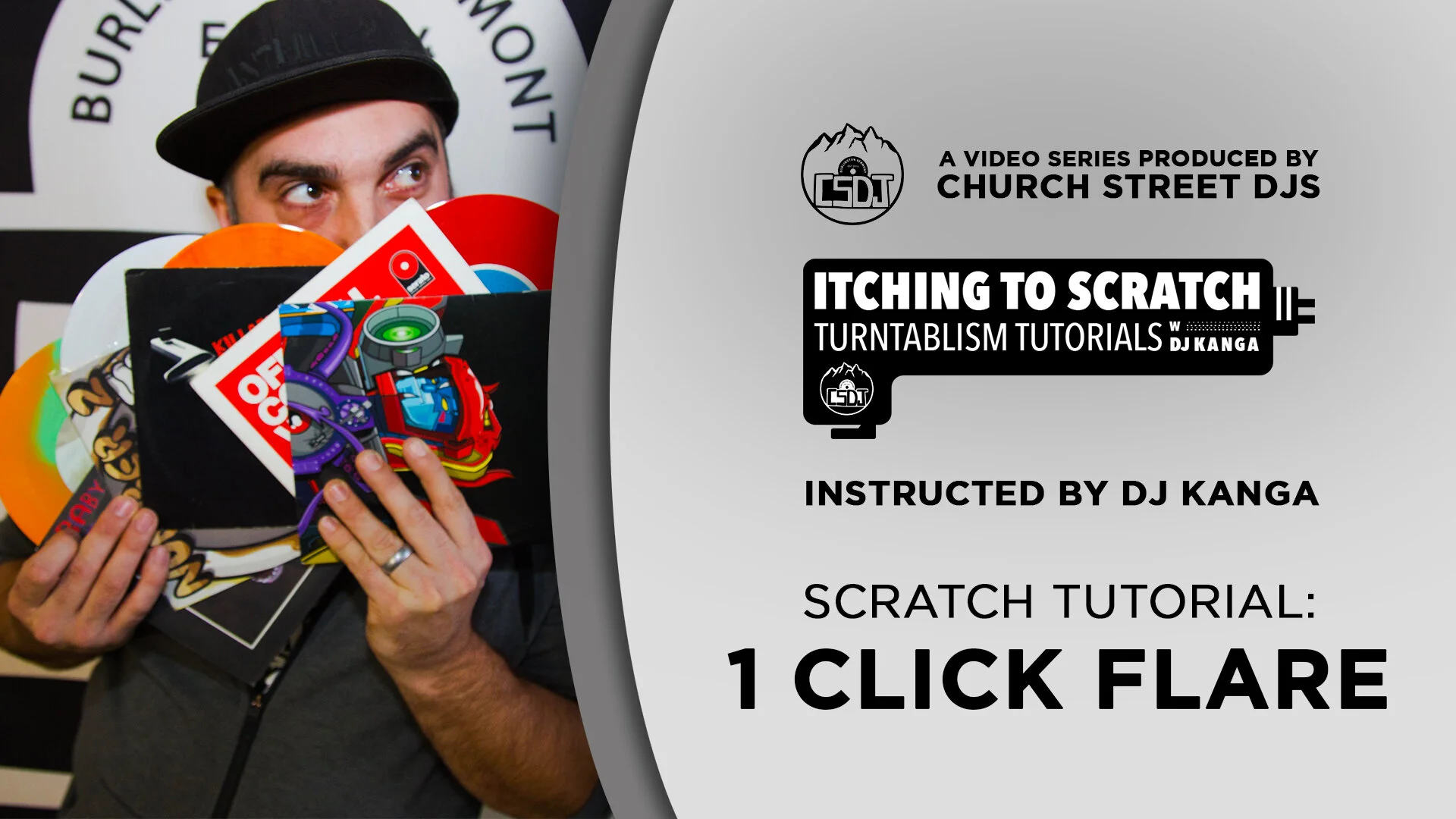The Twiddle scratch uses the ring and index finger to alternate snapping the crossfader against your thumb. This scratch is a precursor to the Crab Scratch and can be done starting with the crossfader open or closed. The idea is to use your thumb almost like a spring to bounce the crossfader against using your ring and index fingers. The first cut is made with a ring finger and the second is made with the index finger.
Week 24: Military
Week 25: Rockit
The Rockit scratch is a funkier variation of the Military scratch made famous by Grandmixer DXT on Herbie Hancock’s track “Rockit”. Done with the classic “Fresh” scratch sample, this is more of a structured rhythm of stabs, forwards, chirps and babies. The way DXT is able to repeat the pattern with ease inspired many young DJs to become the legends they are today.
Week 26: Dicing
Dicing is basically tearing your transforms. Every time a cut is made with the crossfader you also pause the record. As soon as the cut comes back in you continue. There’s not a set pattern with this scratch, but practicing stopping the record as you make a cut will help you prepare for more advanced techniques.
Week 27: Chirp
The chirp is our first “open fader” scratch, so get ready! The chirp scratch starts with a record at the beginning of the sample and the crossfader is open. As you push the record forward, close the crossfader, and as you bring the record back, open the crossfader. The goal is to not hear the record changing direction at the beginning of the sample. This is the first step towards flaring and will eventually allow you to scratch much faster. Whereas transforming would take four crossfader movements to achieve this sound, chirping only takes two.
Week 28: Joe Cooley
Week 29: Slug March
Week 30: 1 Click Flare
The 1 Click Flare is made famous by DJ Flare, start with the crossfader on/open and as you push the record forward and it reaches the halfway mark of the sample being used, make one “click” (on-off-on) with the crossfader. Continue pushing the record through the “click” to the end of the sound. Time the pull back and repeat the “click” halfway through the sample again, pulling the record back to the beginning of the sample. The objective is to have the forward and reverse movements and sounds be exactly the same, chopping the sample in half. Creating 4 notes.









